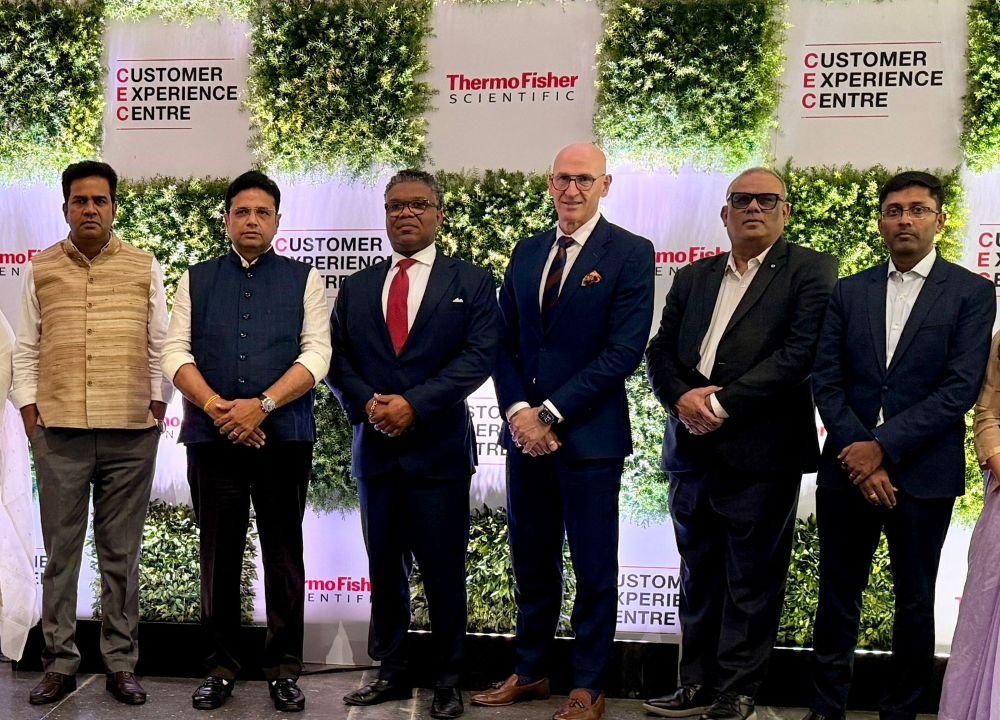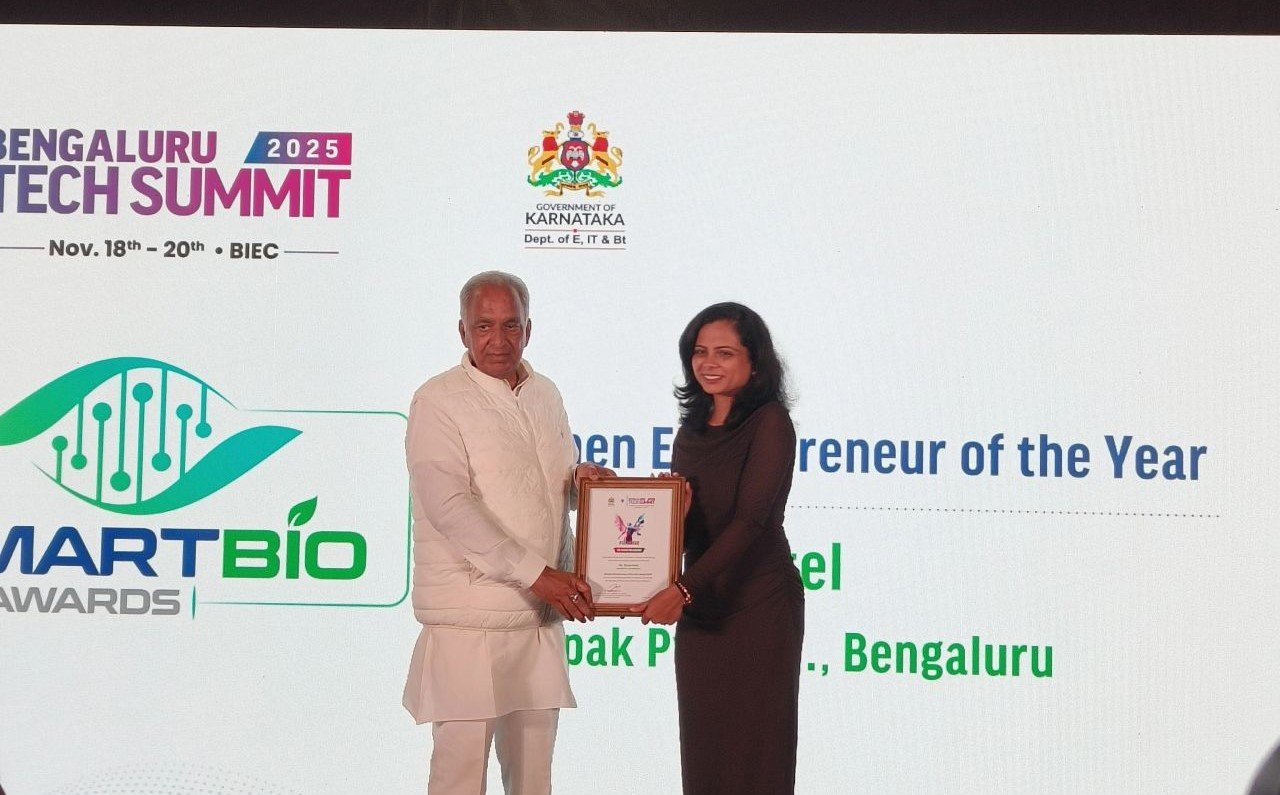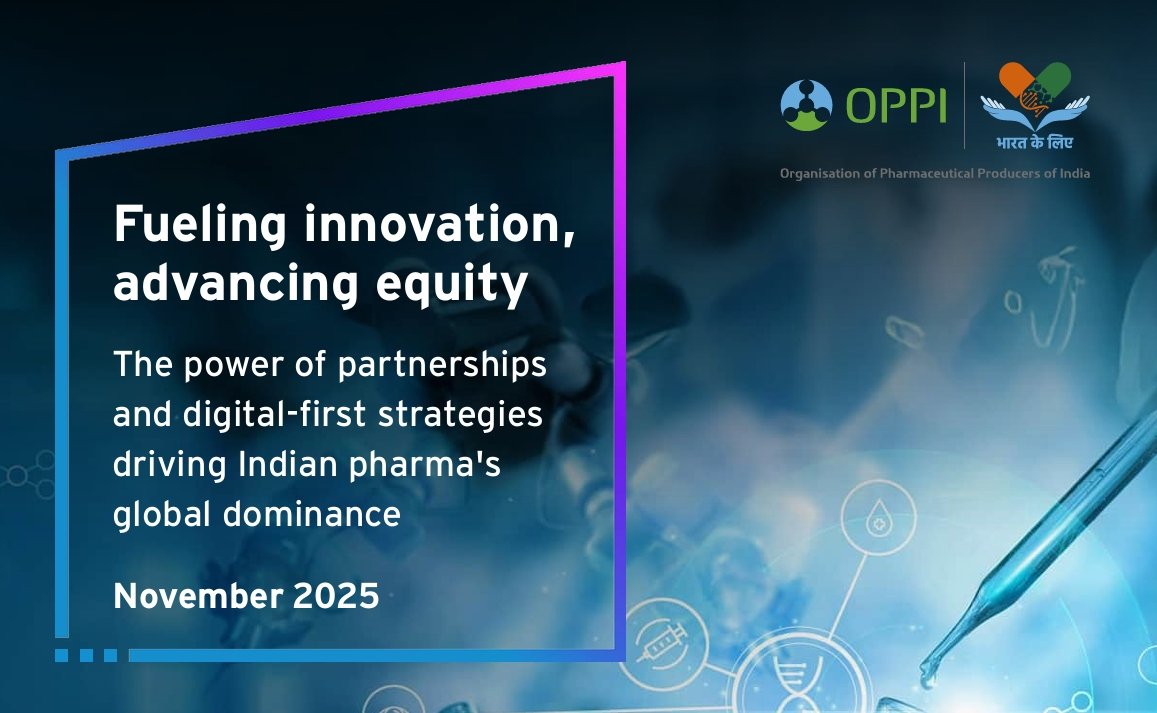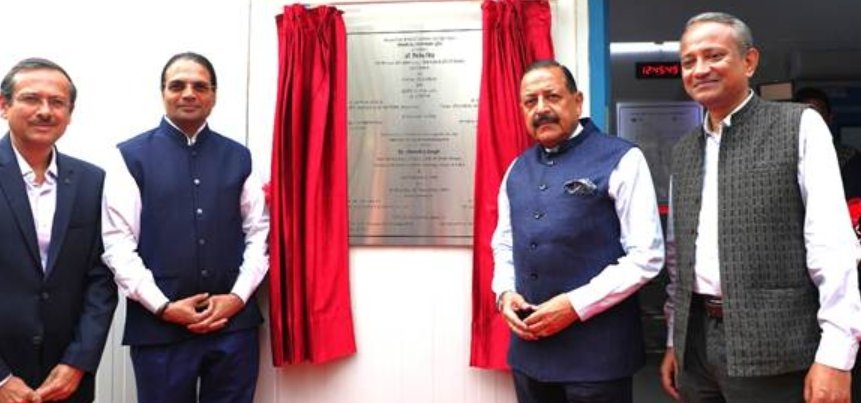India's Pharma Reforms Target Global Credibility
October 01, 2025 | Wednesday | Features | By Ayesha Siddiqui
The Indian government has introduced several measures to simplify drug approvals and support innovation. Key reforms include updating the New Drug and Clinical Trial Rules (2019) and using digital platforms to handle regulatory submissions, with the goal of improving transparency, reducing approval timelines, strengthening pharmacovigilance, and maintaining quality standards. What do these reforms entail, how is the industry responding, and what steps lie ahead to make India’s pharmaceutical sector globally competitive? Let’s find out.
image credit- shutterstock
On August 28, 2025, in accordance with the directions of Prime Minister Narendra Modi towards reducing the regulatory compliance and towards promoting ease of doing business in the pharmaceutical and clinical research sectors, the Union Health Ministry published the proposed amendments to the New Drugs and Clinical Trials (NDCT) Rules, 2019, in the Gazette of India, seeking public comments. The amendments aim to simplify the requirements and procedures for obtaining test licences and for submitting applications related to Bioavailability/Bioequivalence (BA/BE) studies.
The key highlights of the proposed amendments include significant changes to the licensing process. For test licence applications, the existing licence system is being transitioned to a simpler notification or intimation mechanism. This means that, except for a limited category of high-risk drugs, applicants will no longer be required to wait for a formal test licence; instead, they can proceed after intimating the Central Licensing Authority. Furthermore, the statutory processing time for test licence applications will be reduced from 90 days to 45 days. Similarly, for bioavailability/bioequivalence (BA/BE) study applications, the current licence requirement will be dispensed with for certain categories of studies. These may be initiated on the basis of an intimation or notification to the Central Licensing Authority, thereby streamlining the approval process and facilitating faster study initiation.
The reforms are expected to cut application processing times, potentially halving the number of license applications and enabling faster initiation of BA/BE studies, drug testing, and approvals.
This aligns with the regulator’s broader efforts to streamline approvals. In 2024, India allowed certain novel products to enter the market without local clinical trials if they had already been approved in any of six countries with stringent regulatory mechanisms—the United States, European Union, United Kingdom, Japan, Australia, and Canada. This move helped fast-track access to new therapies in India, particularly from global pharmaceutical companies.
The Central Drugs Standard Control Organization (CDSCO) has also launched multiple initiatives to overhaul the regulatory framework. Its recent digital transformation efforts include the National Single Window System (NSWS), One Nation One Drug Licensing System (ONDLS), Track & Trace via QR/barcodes for APIs and formulations, the SUGAM portal etc.
What Industry Says
The pharma industry has largely welcomed these initiatives. Efforts around digitalisation, in particular, are seen as significant. “Digitisation and unification of CDSCO’s online portals are making regulatory interactions more straightforward and giving companies greater visibility into approval timelines. This balance of added responsibilities with clearer and efficient compliances provides a foundation for smoother long-term compliance.” said Dr Milind Antani – Head, Pharmaceutical and Life Sciences Practice, Nishith Desai Associates.
From a global perspective, CDSCO is signalling a clear intent to harmonise India’s regulatory framework with international standards, a move set to elevate India’s stature with major agencies such as the U.S. Food and Drug Administration (US FDA) and the European Medicines Agency (EMA)
“CDSCO’s reforms show increasing alignment with international benchmarks. From the biologics guidelines modelled on The International Council for Harmonisation of Technical Requirements for Pharmaceuticals for Human Use (ICH) and World Health Organisation (WHO) norms to the clinical trial rules that mirror global practices, India is signalling its intent to harmonise with advanced regulatory regimes,” said Dr Antani.
Rakesh Reddy, Managing Director, Aparna Pharmaceuticals agrees, “Strategically, these reforms should bolster India’s regulatory credibility worldwide. Achieving WHO functional NRA status for vaccine regulation, affiliating with the IMDRF (International Medical Device Regulators Forum), and aligning with ICH, FDA, EMA, and WHO standards signal stronger global alignment.”
While many in the industry welcome these administrative reforms, others have reservations. “The reduction in approval time is expected given that the submissions are now online and can be reviewed much more quickly with very basic digital technology. This is of course welcome and will reduce time to launch. However this is only likely to be helpful to generics where the review is rather limited and quite straightforward. This is unlikely to help significantly for new drugs where the review is likely to be more rigorous,” said Murali Neelakantan, Principal Lawyer, Amicus.
A similar perspective is reflected in the context of BA/BE studies. “Since BA/BE studies are primarily for generic drugs which have been in the market for quite some time, I don’t think that this will have a major impact for new drug launches. It will however make it easier for generics to launch more quickly and this may well shorten timelines for the preparation to launch. All generics aim to launch on the date that the patent expires and this administrative change may help them reduce the time taken to start the launch process,” said Neelakantan.
These changes are merely reducing the ‘waiting time’ i.e., the time that companies waste waiting for approvals from CDSCO and this means that the time for the launch procedure will be shorter. “My question about this however is whether this will be applicable to biologics, which are really ‘new drugs’ and need full trials rather than just BA/BE studies to be approved. If this is applicable to biologics, there will be a significant benefit to biosimilars and this will help reduce the launch time significantly,” said Neelakantan.
At the same time, some experts feel the reforms are expected to increase compliance requirements. “Furthermore, stricter quality and compliance requirements place financial pressure on smaller manufacturers, who may find it harder to adapt to the new regulatory environment. Unless supported through targeted capacity-building or phased implementation, this could lead to uneven compliance across the sector,” said Tanya Kukade, Senior Member, Pharmaceutical and Life Sciences Practice, Nishith Desai Associates.
Others highlight the broader gap between regulatory improvements and innovation. “Beyond regulatory oversight, India still lacks strong policy incentives to stimulate original drug discovery. Intellectual property protections and financial frameworks for innovation remain underdeveloped. Without parallel measures to encourage R&D, these reforms may fall short of transforming the country into a hub for novel drug development,” said Naveli Sharma, Member, Pharmaceutical and Life Sciences Practice, Nishith Desai Associates.
Nonetheless, these reforms mark an important step in the right direction and are expected to deliver long-term impact. “Collectively, these reforms are shifting India’s regulatory regime to being more proactive and globally harmonised. While companies must navigate short-term adjustments, the broader outcome is positive: stronger credibility with global regulators like the US FDA and EMA. These reforms reinforce investor confidence and build a stronger supply chain that reinforces India’s role as a trusted global pharmaceutical hub,” said Dr Antani.
Way forward
Looking ahead, experts recommend the additional steps regulators and industry should take together to balance stronger oversight with fostering innovation, sustaining exports, and ensuring affordable patient access.
An immediate priority is strengthening regulatory capacity. “CDSCO has announced plans to significantly expand its workforce, bringing in more inspectors and drug control officers to strengthen oversight across the system. In order to oversee one of the world’s largest medicine manufacturing ecosystems, boosting manpower is essential. State regulators must also be empowered with training and infrastructure to ensure uniform implementation nationwide,” said Reddy.
However, experts emphasise that manpower alone will not be sufficient. “For CDSCO’s regulatory reforms to achieve their full potential, institutional capacity must be strengthened by conducting training programmes for regulators, investing in infrastructure, and ensuring adequate resource allocation. This will be essential to sustain momentum and manage the scale of India’s pharmaceutical industry. Robust institutional capacity will not only support more consistent enforcement but also allow regulators to keep pace with scientific and technological change worldwide,” said Tanya.
Timeliness of approvals is another area demanding attention. “The introduction of conditional or provisional licensing, such as 45-day permits for new drugs, has been floated by Parliamentary committees. Such measures could accelerate innovation pipelines while still allowing regulators to conduct in-depth reviews. Equally important is reducing duplication by recognising approvals already granted by trusted global agencies, while relying on post-market surveillance in India,” said Reddy.
Exports remain a delicate balancing act, with differing views on the impact of reforms. “I don’t think that these administrative changes will have any significant impact on exports. As you know, the level of studies required to satisfy US FDA and other similar regulators is different from that for CDSCO but the waiting time being reduced helps all drug companies,” said Neelakantan.
However, practical challenges must still be addressed. “Recent rules on minimum shelf life for exports have highlighted how compliance can collide with market realities, leading to wastage and financial strain. A more calibrated approach, such as graded thresholds or exemptions for slow-moving drugs, could preserve quality without hurting competitiveness,” said Reddy.
Another key reform now gaining attention is the creation of a national drug database. “The national database is a real issue that has plagued us for decades. Even after the Supreme Court decision in the Cadila case (circa 2000), little was done for decades. I even published a paper last year in the Lancet about it recommending a national database. This is a significant reform, long overdue and will address the issue of prescription and dispensing errors which we are unable to track but know from doctors to be critical. It will also reduce trademark litigation significantly and I hope that this will be the catalyst for reforming the trademarking of generics. I have written about this issue more than a decade ago and sadly, this issue hasn’t been addressed,” said Neelakantan.
These initiatives must also be matched by policies that foster innovation. “India’s pharmaceutical industry has built its reputation on generics, but it must also emerge as a centre for novel drug discovery. This calls for a supportive legal system such as tax incentives for R&D, government-backed grants to fund early-stage research, and public–private partnerships that pool expertise and resources. If designed well, they would encourage companies to invest in high-risk, high-reward research that can yield new therapies,” said Tanya.
Echoing the same sentiments, Reddy said, “Innovation ecosystems also need clearer support. Expedited pathways for advanced therapeutics and AI-driven devices are already being tested. Building on this momentum, regulators should integrate real-world evidence and digital data streams into their evaluation frameworks. Transparent stakeholder consultations would further help industry plan investments with confidence.”
By combining regulatory efficiency with innovation-friendly policies, the sector can achieve a balanced growth trajectory. “Linking regulatory efficiency with innovation-friendly policies would create a more balanced pharmaceutical landscape and targeted incentives would give companies the confidence to invest in research pipelines. The outcome would be a dual benefit: maintaining India’s global strength as a supplier of affordable medicines and positioning it as a source of breakthrough innovations in healthcare,” said Naveli.
Finally, strengthening global partnerships will be essential to reinforce India’s credibility and market position. “Importantly, India’s global credibility will grow only through deeper partnerships. Mutual recognition agreements, joint inspections, and data-sharing arrangements with the US FDA, EMA, and WHO will not only smoothen cross-border registration but also enhance trust in Indian pharmaceuticals,” said Reddy.
As India’s pharmaceutical sector undergoes regulatory changes, the main challenge is to balance stronger oversight with efforts to promote innovation, maintain exports, and provide affordable access to medicines. Achieving this will require ongoing coordination between regulators, industry, and stakeholders to build a competitive and sustainable ecosystem.
Recent initiatives of the CDSCO
- Digitisation and the SUGAM Portal
A central pillar of CDSCO’s reforms is the move towards digitisation. The SUGAM portal now serves as a single online platform for applications relating to clinical trials, import licences, marketing authorisations, and manufacturing approvals. Similarly, the One Nation–One Drug Licensing System portal further harmonises requirements across states. By replacing paper-based processing it has improved efficiency, reduced delays, and enhanced transparency.
Another critical step has been the introduction of track-and-trace mechanisms through the Drugs (Amendment) Rules, 2022. Mandatory barcodes and QR codes on bulk drugs allows closer monitoring of supply chains. This facilitates curbing counterfeiting and enhancing consumer confidence.
The Union Health Ministry has also launched SHRESTH – the State Health Regulatory Excellence Index, a first-of-its-kind national initiative to benchmark and strengthen state drug regulatory systems through a transparent, data-driven framework.
- Draft Guidelines on Similar Biologics
With biologics and biosimilars becoming central to modern medicine, the draft guidelines on similar biologics issued in 2025 offer much-needed clarity. They introduce a stepwise, risk-based framework that focuses on product characterisation and mandates clinical trials only when necessary. By aligning closely with ICH and WHO standards, these guidelines strengthen global acceptance of Indian biosimilars.
- Registration of Clinical Research Organisations
CDSCO has mandated registration of all Contract Research Organisations (CROs) from April 2025. CROs must register on the SUGAM portal and comply with defined ethical and operational standards. Regular audits and inspections are expected to ensure data integrity and reliability. This provides multinational sponsors greater assurance that Indian trial data can stand scrutiny before regulators such as the US FDA and EMA.
- Tackling Adulterated and Spurious Drugs
The circulation of substandard and counterfeit medicines remains a persistent challenge. However, CDSCO has intensified enforcement by working proactively with state regulators to tackle this issue through risk-based inspections of drug manufacturing and testing firms.
Actions against offenders including Stop Production Orders (SPO), Stop Testing Orders (STO), license suspensions/cancellations, warning letters, and show cause notices have been taken depending on the severity of non-compliance. The aim is not only to punish violations but also to protect patients by reducing the very presence of harmful drugs in the supply chain.
- Pharmacovigilance Reforms
Post-marketing surveillance has been strengthened through an expanded Pharmacovigilance Programme of India (PvPI). More reporting centres, simplified reporting mechanisms, and digital platforms for adverse drug reaction submissions ensure that safety signals are captured promptly. Marketing authorisation holders are also required to submit regular safety updates with the objective of making risk management a continuous process rather than a one-time compliance exercise.
Ayesha Siddiqui










